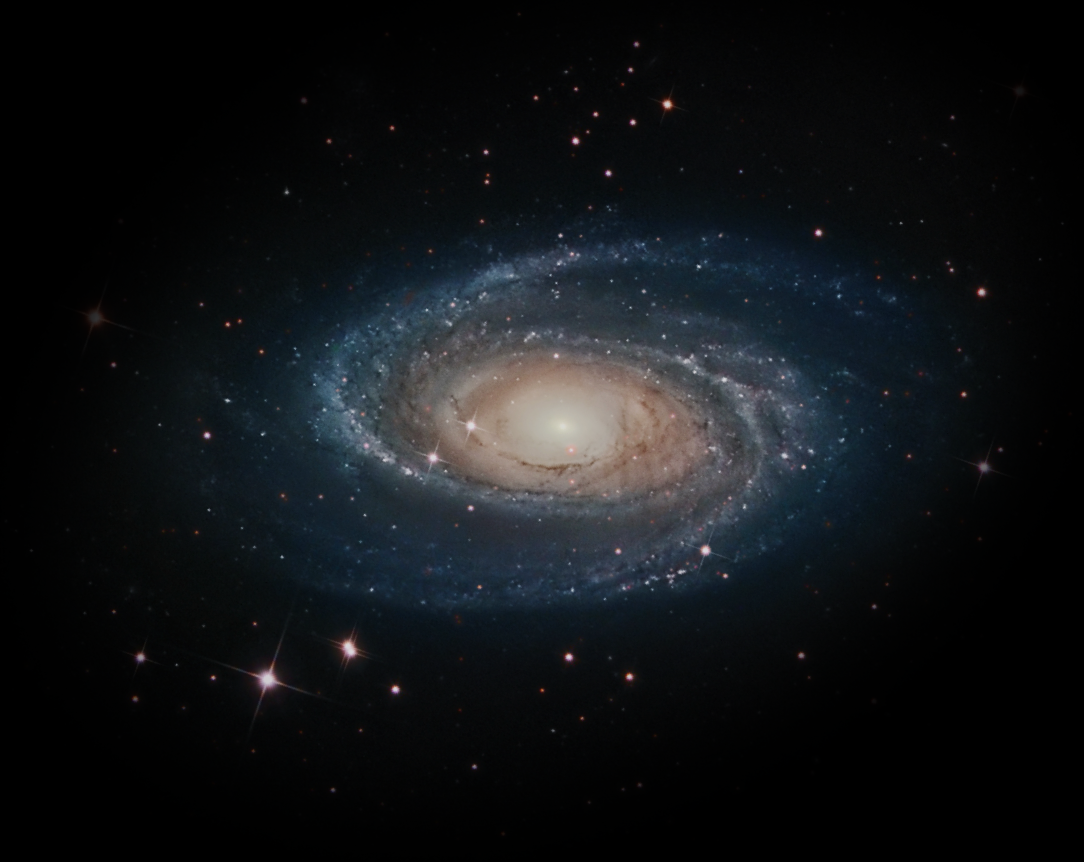Physics
Fox
Summary
- A galaxy is a large collection of stars, often in the form of a spinning disk.

- The Solar System is in a galaxy called the Milky Way.
- Most galaxies have a black hole in the centre. Near a black hole, the gravitational pull so strong that nothing — not even light — can escape from them.

[I'd] Traverse the Milky Way
Trying to get home to you
And you bring some piece of the stars
A galaxy is a giant collection of stars that are bound together because of gravity. A galaxy can have anywhere between a hundred million stars (that’s 1 with eight 0s after it), or a hundred trillion stars! (that’s 1 with fourteen 0s after it!)

Photo credit: Giovanni Benintende
Galaxies come in many types. The most common type is a spiral galaxy. Spiral galaxies consist of a flat disk of stars that orbit around a central ‘bulge’. Bulges are more 3-dimensional than the flat disk, and contain older stars than the rest of the galaxy.

Photo credit: ESA/Hubble & Nasa
Another type of galaxy is an elliptical galaxy. These look like smooth, bright ellipses (squashed circles). However, they are actually 3D ellipses (or ellipsoids). The stars in elliptical galaxy are generally older than those found in spiral galaxies. Unlike stars in spiral galaxies, stars in elliptical galaxies have fairly random orbits around the galaxy centre.

Photo credit: ESA/Hubble & Nasa
The final main type of galaxy is an irregular galaxy. These galaxies have quite a chaotic appearance, and are quite small compared to other galaxy types.
Nearly all galaxies contain dark matter. Like ordinary (everyday) matter, dark matter has a gravitationally pull on other matter. However, unlike ordinary matter, dark matter cannot be seen at all! It does not emit, reflect or absorb light (which is why it’s dark).
Currently, no one knows what dark matter is actually made of — even though it makes up about 85% of the total matter in the universe!
The Solar System is in a spiral galaxy called the Milky Way.

If you’re somewhere without much light pollution (and it’s not cloudy), you can actually see the Milky Way with your own eyes!

(Okay, I guess we’re always looking at the Milky Way: we’re in it! But you know what I mean.)
Because we’re inside the Milky Way, we can only see it side-on. To get the full circular view we’d need to be far outside it. (Imagine a chocolate chip near the edge of a cookie. From its point of view, all the other chocolate chips would appear in a straight line!)

Our view of the Milky Way is what gives it its name: it is called the Milky Way because it looks like milk that’s been poured over the sky. You might find this name silly for something so big and grand — but hey, there’s no use crying over spilt milk.

Nearly all large galaxies have a black hole in the centre.

Black holes are what’s left when a very massive star collapses under its own gravity (often the outer parts of the star will explode at the same time, in an event called a supernova).

Black holes are made up of an enormous mass within a tiny space, so there is a very strong gravitational force near a black hole.
This gravitational pull is so strong that nothing can escape a black hole’s grasp! Anything that gets close enough to a black hole (including light) is doomed to be sucked into it. (This is what makes black holes black!)
This point-of-no-return near a black hole is called an event horizon. No matter how fast you are going, if you are inside an event horizon there is no way out.
The Milky Way has its own black hole in the centre, called Sagittarius A*. It has a mass 4 million times as big as the Sun!

In 2019, the first image of a real black hole was formed. This is from the centre of the elliptical galaxy Messier 87. The black hole has a mass billions of times the mass of the Sun.

The nearest galaxy to the Milky Way is the Andromeda Galaxy. Like the Milky Way, Andromeda is a spiral galaxy.

The Andromeda Galaxy is moving towards us at around 100 km/s — in fact, it’s on a collision course with the Milky Way!
Don’t panic though, this won’t happen until around 4 billion years time. Actually, even when the galaxies do collide, Earth won’t be destroyed. This is because both galaxies are mostly empty space, so it’s very unlikely a star or planet from Andromeda will crash into us.

Image credit: NASA, ESA
When Andromeda and the Milky Way collide, they will likely merge into a big elliptical galaxy. Some have referred to this galaxy as Milkdromeda. To me, this sounds more like the name of a Transformer that turns into a milk float.
Note that all the stars we see in the night sky are also in the Milky Way. These stars are the ones nearest to us.
But hold on — if these stars are inside the Milky Way, why do they look like they’re outside it?

Going back to the chocolate chip cookie analogy, these other stars are the chocolate chips above and below the chip near the edge. There’s not nearly as many chips as are there are in the rest of the cookie, but they are still there!
Congratulations!
4 of 4 questions completed
+ ⭐️ collected.
Sign up (for free!) to:
• save your progress 📊
• create constellations✨
• customise your fox! 🦊







